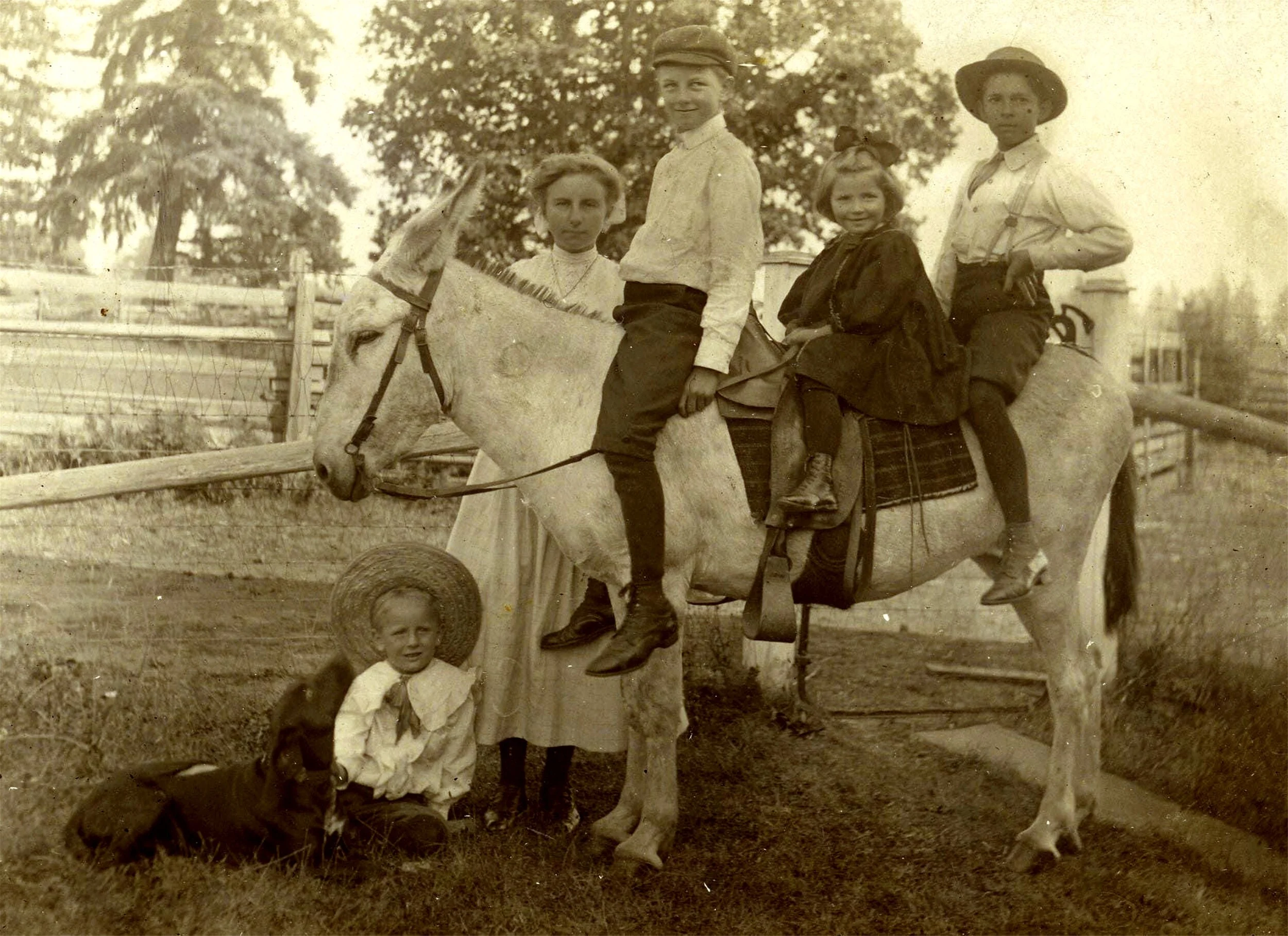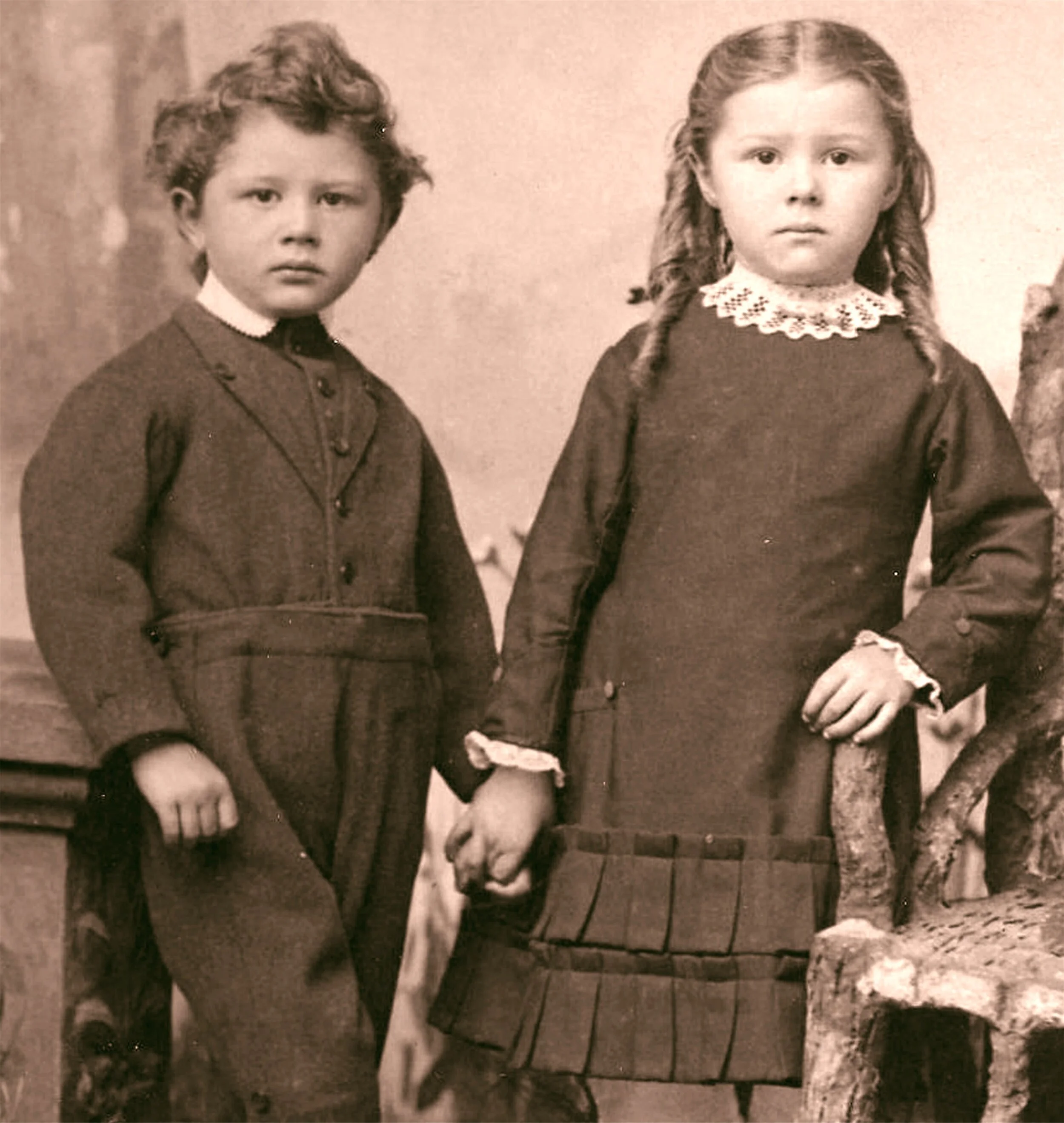CHILDHOOD
Growing Up at the Aurora Colony
The children of the Aurora Colony participated in all phases of the communal lifestyle but they especially appreciated the many festival days when music and dancing was encouraged. No diaries survive from the children, though several letters offer insight into the daily routines. These letters emphasize how the older children cared for the younger ones in addition to how they were taught their trades.
Living in the village of Aurora must have been a very interesting experience especially once the railroad started coming to town in 1870. It was the younger people especially who forced a change from communal living as they increasingly wished for control of their own land and resources.
Toys
There are quite a few surviving toys and books from the children and a large collection of dyed Easter eggs and tin cookie cutters. It is also fascinating to note that many of the toys that were made for the children are simply miniatures of the larger pieces used by the adults. Thus, a large bed used by a full-sized person was duplicated in style for a doll. There are several examples of this in our collection.
Education
GEORGE WOLFER REMEMBERS
“Karl Ruche and Fred Keil were my schoolteachers. I was spanked three times every morning before dinner. Fred Keil taught morning school early. I was always glad when my elders came to get me from school even in mid-winter to husk corn or any other sort of labor disagreeable to many. Ruche was a habitual smoker who used a long-stemmed German pipe.”
CLARK MOOR WILL ON BETHEL EDUCATION
“Moses Miller was the first school teacher at Bethel. After Ruche arrived (1851) he took over the teaching chore, and after Ruche left with Keil in 1855, Harrison Beer taught at Bethel in English and German after that.”
AURORA EDUCATION
Clark Will has no record of school activity at Aurora before the arrival of the 1863 caravan. “It was then that John Will induced Keil to have Ruche, the toll bridge keeper, teach school.” Will noted that the Bridge Toll Master’s House was also the first schoolhouse. It was furnished with low rough-hewn benches (12-14 inches high). Pupils held books on lap or under the bench. Ottilia Will, Clark’s adopted mother, remembered, “We were never given more than one book at a time—-most of the scholars had slates; foolscap paper was furnished for special work.”
School was taught only a few hours in the mornings with arithmetic and reading. During the vacation season, school children were employed cutting sugar cane — the cane tops were used for cow fodder.
TEACHER GEORGE WOLFER: SOME STORIES
“There were times when some pupils did not really care to be in school. In such a mood they would say, ‘Oh, let’s not have school today.’ Ruche would tell the student to go out and play. He would motion to the empty seat and chide the absent occupant about his or her schoolwork and behavior in a very believable manner.”
TUTORING OPPORTUNITIES
There was some form of night school. Christopher Wolf and Henry Conrad Finck were leaders in this work. Groups of older teens met at some home after evening meal for a reading bee at which discussions were held on physics, geography, chemistry and music.










